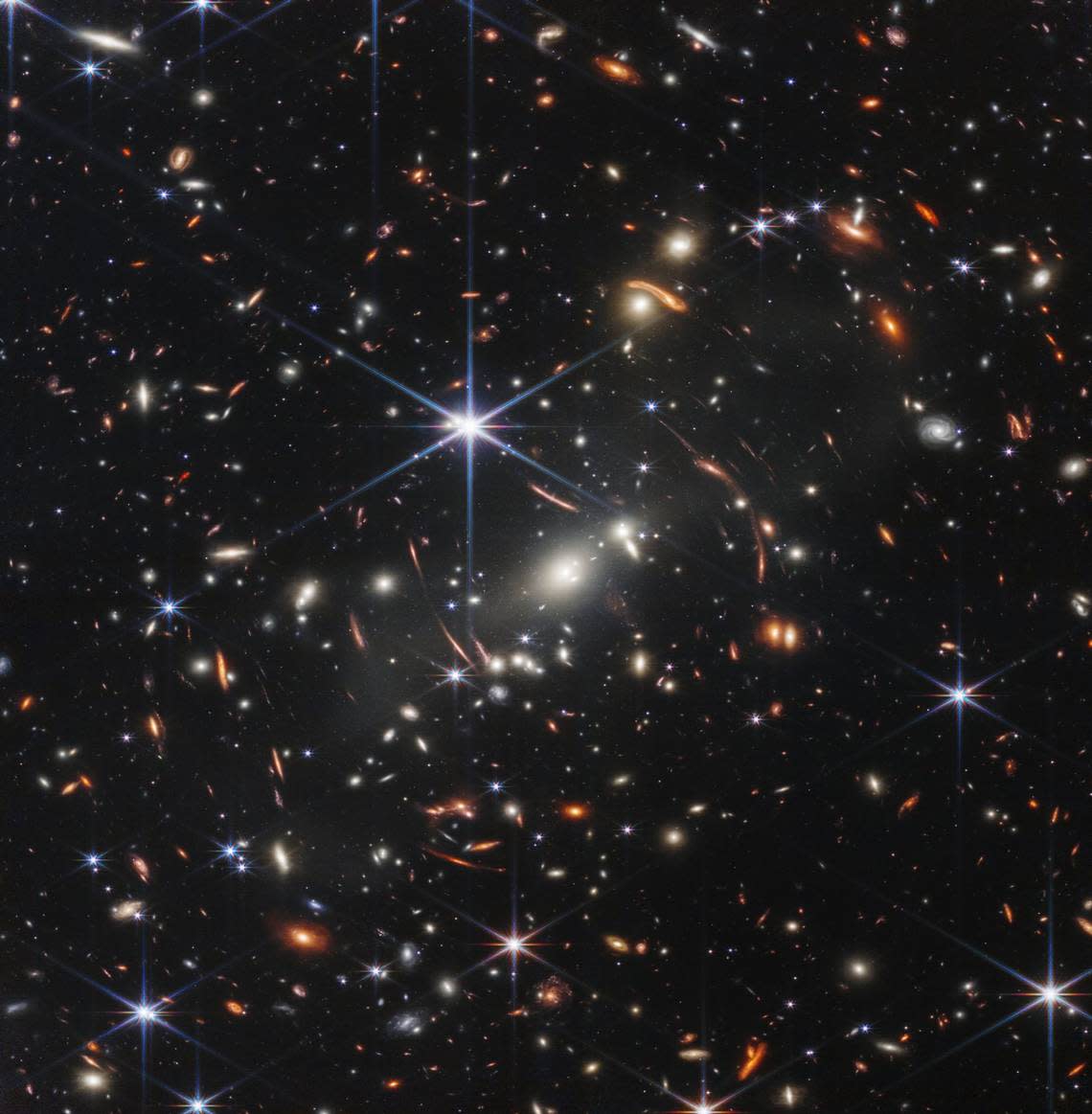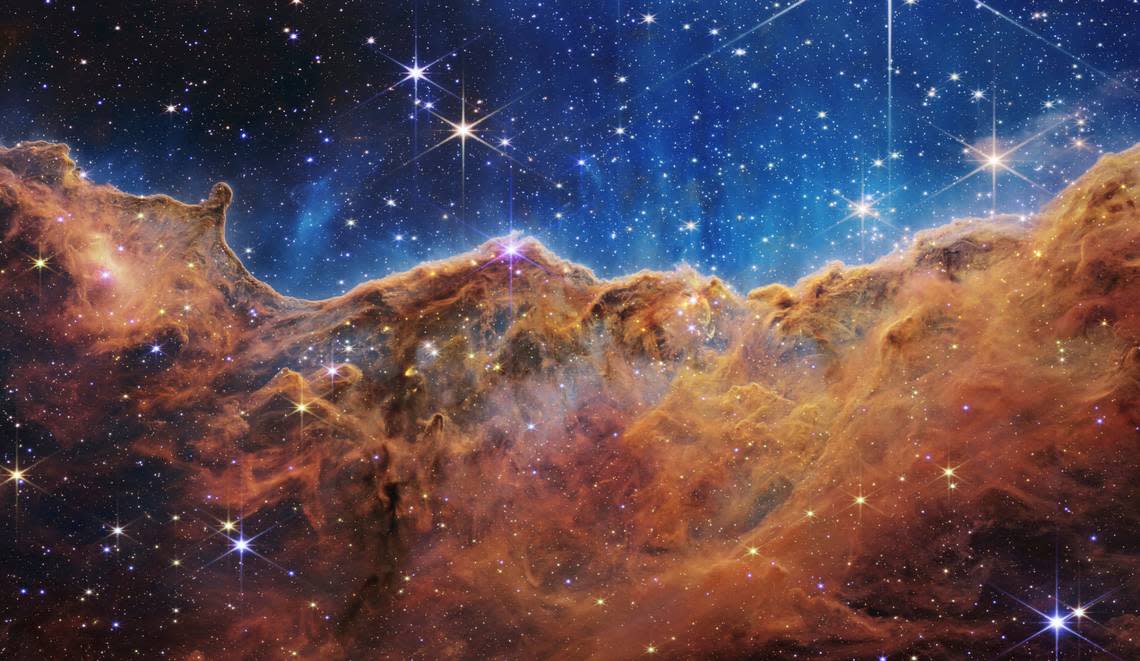Astrophysicist ‘AstroKatie’ Mack shares what she sees in the James Webb telescope photo
The light from the dark sky became dazzling on Monday night, July 11, 2022.
Katie Mack, an astrophysics scientist who until recently worked at North Carolina State University, was gazing at a photo that had many brilliant sparkles.
The square picture swarmed with bright dots — white, red, blue and some more star spikes — against a black background.
The photo she looked at was from the government’s latest camera, the James Webb Space Telescope of the National Aeronautics and Space Administration. NASA debuted one of the photos on Monday at a White House briefing with President Joe Biden.
Less than an hour later, Mack recorded a video in which she talked about some of the details in the photo and posted it on Twitter. The message was shared hundreds of times in the next few hours. The video, published on YouTube, now has hundreds of thousands of views. Mack’s YouTube channel has around 5,000 subscribers.
“It was kind of a spur of the moment,” Mack told The News & Observer in an interview.
JWST’s photos depict what the young universe looked like but Mack realized the photo might not be self-explanatory to many people.
“I think it would be useful to point out the cool things about [the image], why I was excited, and why I thought other people might be as well,” she added.
New camera, new era
Each dot in the photo represents a galaxy, a star or something the scientists are trying to figure out. It’s like looking up at the sky at night, but with a much, much closer view.
Space telescopes like JWST and its predecessor Hubble telescope capture beams of light emitted by stars and galaxies. The more distant these objects are, the more they emit infrared light, a type of radiation invisible to human eyes.
JWST is sensitive to infrared and can see stars and galaxies that are far away. The photos expand the view, showing things that humans had never seen before, according to Mack.
In the video, Mack explains several space objects in the photo, which portrays beaming eight-pointed spikes that appear to be stars and a lot of galaxies of various shapes and sizes. Some galaxies swirl like the Milky Way, and some appear dim tiny dots.
The photo’s center features several white and fluffy blurs, which are surrounded by arcs that encircle the center. The blurs are gigantic galaxy clusters that could have hundreds or thousands of galaxies, Mack said in the video.

Each cluster of galaxies can create gravity so strong that it affects how the light travels — and this effect is important for scientists to understand outer space.
Seeing through these galaxy clusters is similar to looking through a large wavy glass window. The glass warps the light, causing it not to travel in a straight line and distorting the shape of objects.
The galaxies far, far away and behind the clusters, whose light would be distorted by the cluster’s gravity, become the streaks of arcs encircling the center — as the photo shows.
Mack said if the cluster was not there, those arcs would be simply galaxies like the many of those dots on the edges of the photo, and the telescope might not be able to see them.
Photo holds ‘a grain of sand’
The light distortion and shape-changing effect, or gravitational lensing, can make the galaxies appear much larger than they are.
Light stretch and magnification from gingravitational lensing are “important because it allows us to see things that are so distant and so dim,” she said.
JWST’s photo holds “a grain of sand,” said Bill Nelson, NASA administrator at the briefing. “The light that you are seeing on those little specks has been traveling for over 13 billion years.”
This newly released photo is a glimpse of what the universe looked close to when it was born, “like if you were there,” Mack said.

Mack believes her video is popular because it’s one of the first to explain what the telescope shot that night. She wants to be part of the research community to communicate the value of the picture.
The telescope’s photos will be a “treasure trove” for scientists, she said in the video.
“I’m just gonna stare at this longer,” she announced before ending the video.
Mack is now the Hawking Chair in Cosmology and Science Communication at the Perimeter Institute for Theoretical Physics in Canada. She is the author of the New York Times Notable Book of 2020, “The End of Everything (Astrophysically Speaking).”
As NC State astrophysicist Katie Mack’s star rises, she ponders how the universe will end
First full color images from Webb Telescope reveal cosmic landscapes
What to know about James Webb, the NC native and namesake of NASA’s telescope




